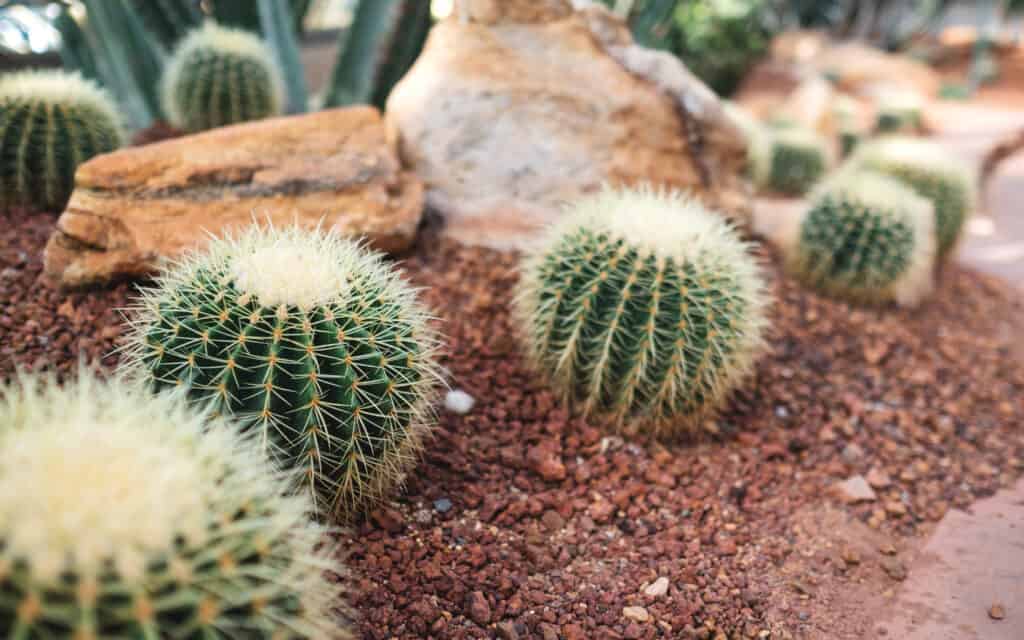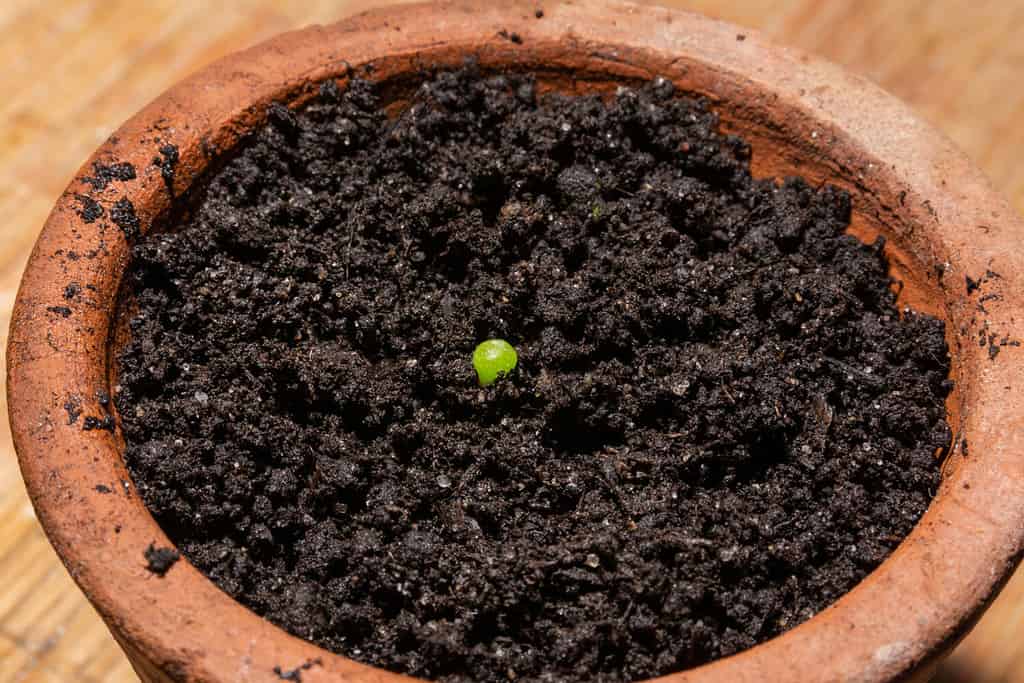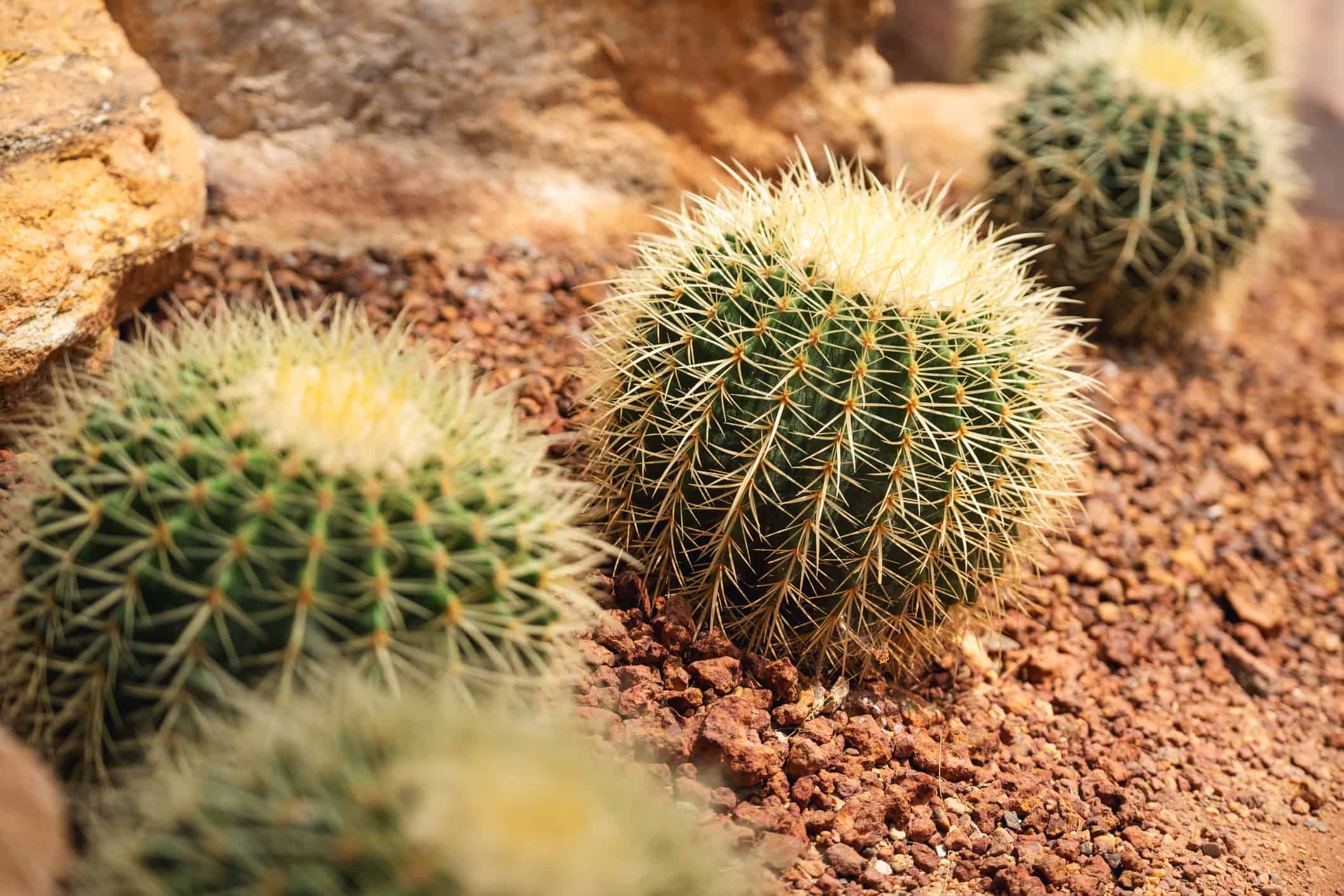Cacti are a renowned house plant for their delightfully prickly appearance and low maintenance requirements. For plant enthusiasts in northern climates, this desert delight adds a nice, exotic element to interior decor.
The golden barrel cactus boasts a lovely color and shape, making it a top choice for cactus lovers.
In this article, we’ll cover golden barrel cactus care tips, growth habits, and more.
Let’s dig in!
Golden Barrel Cactus: Origins
The golden barrel cactus is scientifically known as Echinocactus grusonii. It’s also called the golden ball cactus due to its globular shape and cheekily referred to as Mother-in-law’s cushion.
Cacti in the genus Echinocactus are known for their dense coverage of sharp spines and small, delicate blooms. While it’s difficult to find the golden ball cactus in its natural environment due to unsustainable harvesting, it’s most abundant in Central Mexico.
This in-demand ornamental succulent can often be found as a landscaping design staple in arid states like Arizona. The high demand for this plant over the 20th century led to its overharvesting and endangered status.
Now, most golden barrel cacti are cultivated in nurseries for distribution.
Golden Barrel Cactus: Appearance
The golden barrel cactus boasts a visually appealing spherical shape and vibrant green color. Its yellow spines give it a golden aura, contributing to the name.
Atop the cactus is a halo from which delicate yellow flowers will bloom. These cacti can grow anywhere from 3-6 feet tall! However, they’re incredibly slow growers with a long lifespan; it’s unlikely that your small potted cactus will reach full growth in your lifetime.
How to Care for a Golden Barrel Cactus

are popular plants because they are easy to care for, grow slowly, and have beautiful bright yellow flowers.
©iStock.com/Farknot_Architect
Golden barrel cacti are easy to care for and incredibly beginner-friendly. They are primarily indoor plants but can be planted outdoors in USDA zones 10-11.
1. Soil Selection
Choose a well-draining cactus soil for your golden barrel. Succulent soil will work in a pinch, but cactus soil is less absorbent and more representative of this plant’s natural environment.
Do not use regular potting soil, and choose a pot with sufficient drainage to avoid root rot.
2. Watering
Beginners and black thumbs will love this cactus. Water this cactus monthly during the growth season in the spring and summer, allowing the soil to dry entirely before watering again. During drought periods, increase watering to every three weeks.
During the winter dormancy period, extend your watering schedule to every six weeks. If your cactus starts to look whithered, it could be a sign that it needs more water.
3. Sun Exposure
Sun exposure is essential for your cactus to thrive. Place this gem in a sunny window where it will get a minimum of six hours of light each day. During the winter, consider supplementing the sun with a grow light.
If you’re placing your golden barrel outdoors, be cautious of direct overhead light. While this desert succulent loves the sun, direct, intense exposure at peak daylight hours can be damaging. If you notice brown spots or scabs forming on your cactus, it’s getting too much direct light.
4. Maintenance and Care
The golden barrel cactus’s spiny exterior helps keep pests away. However, scale insects or mealy bugs may invade.
If you notice pests, spray with a diluted, succulent-friendly pesticide—you can’t wipe this one down with a cloth without harming yourself and it.
5. Repotting and Fertilization
Your golden barrel will thrive without fertilization. However, introducing a cactus-friendly fertilizer monthly during the active growing season can encourage blooming.
Repot your cactus every two years to replenish the nutrients in the soil.
How to Propagate the Golden Barrel Cactus
The golden barrel cactus will produce offshoots or pups with proper care. You can gently remove these with tongs and replant them in individual pots. However, it may take years for your cactus to produce offshoots.
How to Grow the Golden Barrel Cactus from Seed

©Emmily/Shutterstock.com
It will take years for these cactus seedlings to grow and mature.
To grow your cactus from seed, follow these steps:
- Sprinkle seeds over cactus soil in a shallow dish. Use a toothpick to gently cover the seeds with soil.
- Mist the seeds and cover with plastic wrap.
- Place the tray or dish in a sunny window.
- Continue misting as the seedlings develop, keeping the soil moist.
- Leave the seedlings to mature for 6-9 months/
- When the seeds have matured into small globes with spines, transplant them into separate containers.
Patience is everything when growing cacti from seed.
When Will My Golden Barrel Cactus Bloom?
It’s incredibly rare for golden ball cacti to bloom indoors. However, ensuring your cactus has enough sunlight and regular fertilization can promote the bloom.
If you’re lucky enough to see floral growth, be sure to remove withered petals to protect your cactus from bacteria.
Is the Golden Barrel Cactus Rare?
Golden barrel cacti are popular in indoor settings and landscaping but rare in their natural environment. Their endangered status is a result of overharvesting, human development, and livestock grazing.
It’s estimated that only 6% of their historical range remains, with only 1% surviving outside protected areas.
Are Golden Barrel Cactus Plants Toxic?
This cactus is non-toxic and pet-safe. However, their sharp spines can damage delicate paws. Keep this plant out of reach of pets and children.
Thank you for reading! Have some feedback for us? Contact the AZ Animals editorial team.








